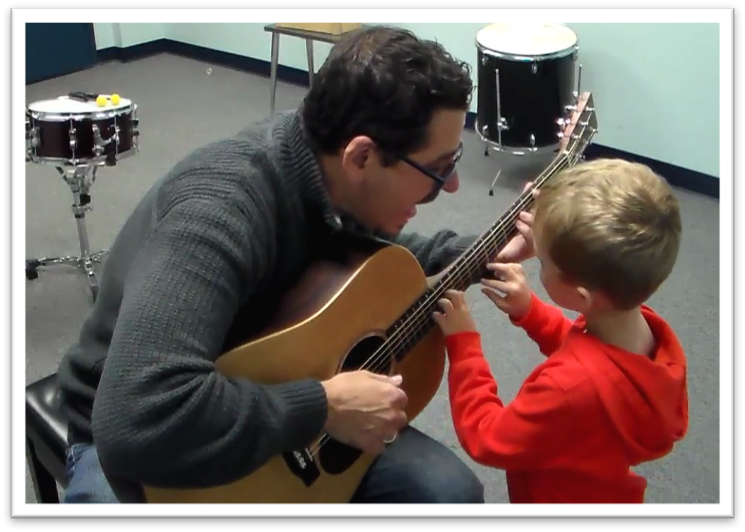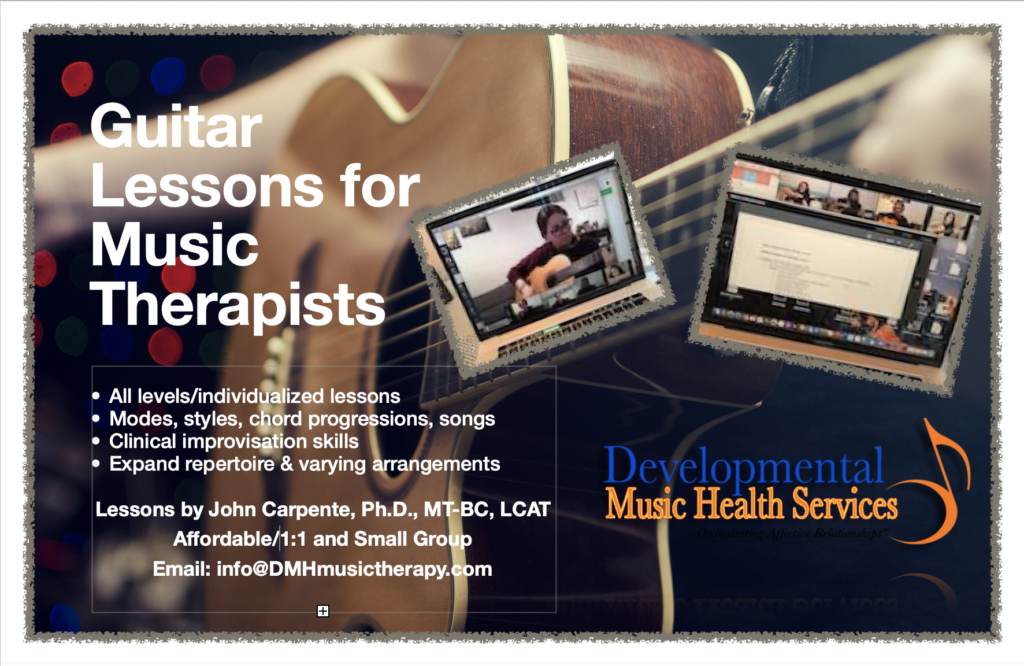
Below is a brief introduction to the mixolydian mode for the guitar. Also included, are some practice ideas to help incorporate this mode into your clinical tool box.
I. INTRODUCING MIXOLYDIAN
Mixolydian Mode
- The relationship to the major scale
- Relationship between major scale and Mixolydian
- The mixolydian mode is always based on the Fifth scale degree of the relative major scale:

- The relationship to the major scale (5th degree)
- Relationship between major scale and Mixolydian
- Based on the 5th scale degree of the relative major scale
- Varies from the major scale by the flatted 7th.
- The scale degrees are R, 2, 3, 4, 5, 6, and b7
Mixolydian: Basic Chords/Triads
| I Chord | Major | G-B-D |
| ii Chord | Minor | A-C-E |
| iii Chord | Diminished | B-D-F |
| IV Chord | Major | C-E-G |
| V Chord | Minor | D-F-A |
| Vi Chord | Minor | E-G-A |
| VII Chord | Major | F-A-C |
Practice Techniques
Exploring the Mixolydian: It’s a Process
- Sing the scale and begin to anticipate and “hear” the b7 (minor 7th)
- Sing & develop short melodic themes that you repeat (emphasize the b7th)
- Create tonal center (we are in G mixo, not C major, yes?)
- Begin with a simple ostinati in the left hand and begin to sing
- Understanding harmonies (develop chords on each tone)
- Choose 2 chords and play a melody between the 2 chords
- Let’s not forget about rhythm, tempo, range (piano/guitar) and singing
- Guitar: Play the scale with 1 finger on 1 string, slowly and evenly
You need to start somewhere
- 1-note, 2-note, 3-note, and 4 note improvisations
- Improvising on a single chord
- Improvising with one hand
- Melody improvisation alone
Tonal Center
- Finding and announcing the tonal center
- Understanding triad for each tone (i.e. major, minor, ½ diminished)
- Constantly emphasizing tonal center
- Focusing on identifying tone/s in the mode (i.e. G mixo- F, D mixo-C, etc.)
- Chord placement
- If you’re in G mixolydian do you hear the resolution going to C or G?
The initial focus of the music therapist (improviser) is to use music to facilitate musical engagement and interaction
- Observe
- Listen
- Musically approach
- Follow musical cues
- Meeting music
- Extend the play: deepening the experience
Interested in learning more? Check out our guitar lessons!

Mixolydian for the Guitar and Voice: Resource for Clinical Improvisation
